How to Turn a Tree into a Forest [Gardening]

Source - Pixabay
Did you know that cloning a tree can be done in your backyard? It's easy, and I would like to show you how.
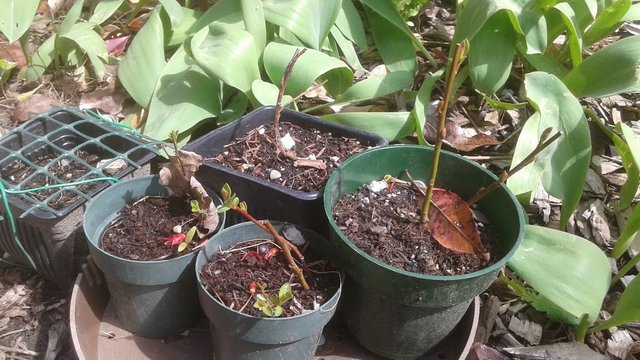
Over the last five years as I have explored experiments with gardening and bonsai, I have had a high success rate of rooting various cuttings. I started out rooting easy ones like #Willow, Chinese #Elm, #Forsythia, and #Hydrangea. Lately I am experimenting with rooting #Grapevine and #Cherry trees. Below, I'm going to teach you how to do it.
Other than my cover photo, all images in this post are original works taken from my smarthphone. Enjoy!
First, let's clarify what I mean by a clone
Cloning is not as advanced as you might think. It doesn't have to be performed in a laboratory with test tubes, needles, and sheep.
Many types of plants can be cloned naturally, by taking a piece off, and allowing it to grow roots in the soil to form a new plant. Any leaves, branches, or roots removed from the original plant has the exact same DNA as the mother plant it came from. Anything that is an exact DNA duplicate is what we call a clone.
Now, onto the fun part
Let's duplicate... replicate... Let's clone a plant!
Oh, what the hell! Move over God, I'm taking charge. Let's clone a whole bunch of stuff.
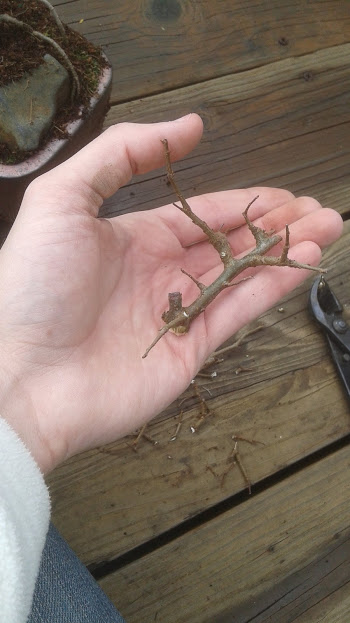
When to make cuttings
The best time to take cuttings from a tree or bush is when the plant is still dormant. The sap will be less like to bleed out if the season has changed to winter. I prefer making cuttings in October and February, because I can still see where the leaves are, or where the buds are forming. This help me to identify a living branch that can be made into a cutting. This method is called a hardwood cutting, since the new stems on a plant often become harder in the winter.
Currently, it is April and many of my trees are just starting to push out new leaves. This is probably the last month that would probably work for making hardwood cuttings. I wouldn't want to make any cuttings on thick #branches, because it might cause the #tree to bleed out too much sap.
In the photo above, I pruned this branch off of my Chinese Elm in February 2018. I thought this was a good time to #prune the thick #branch because I knew the sap would not run as long as it is still cold temperatures.
Making the cut
I always clean my pruning shears first, to avoid contamination, and then I make as smooth and clean of a cut as possible.
Before pruning a branch to make a cutting, determine if the branch is still alive, and how old it is. Newer branches grown in the previous year will usually perform the best as a cutting, as it has more living tissue, and a softer bark layer capable of absorbing water more easily. Also look for #buds. Some species may not form #leaves unless it has a buds or a node where leaves will form from.
Cut branches so they are approximately the size of a pencil. One branch can give you multiple cuttings this way. Or, if you are trying to grow a weird tree shape, like a bonsai, you can leave some the side branches if you cut them down very small, as long as the total cutting it is small enough to fit in your hand. Too many buds and and long branches are going to be too hard for a branch without roots to support, so do not be shy about cutting it down to an appropriate size to increase the chances of success.
I like to make all my cuts straight across the grain of the wood. Some people like to make diagonal cuts, but mine usually rot if too much of the inner wood is exposed. It only needs one tiny piece of the cambium layer to be exposed to the water for it to #root.
Rooting Hormone (Optional)
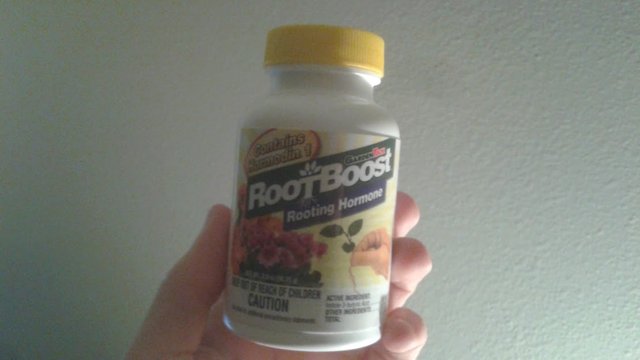
You can apply a rooting hormone to help stimulate root growth. These are sold in garden stores, in a powder form. Just dip the cut end into the powder, and don't wipe it off.
Natural hormones also exist in nature. Some people use honey, which has plant sugars and properties capable of protecting against bacterial rot. I like to use willow, its wood leaches out a chemical that stimulates root growth. Some people steep willow wood in water, and use the water to feed the other cuttings. I like to just throw some willow cuttings on top, and let the rain slowly do this over a longer period of time.
Prepare a gravel mixture
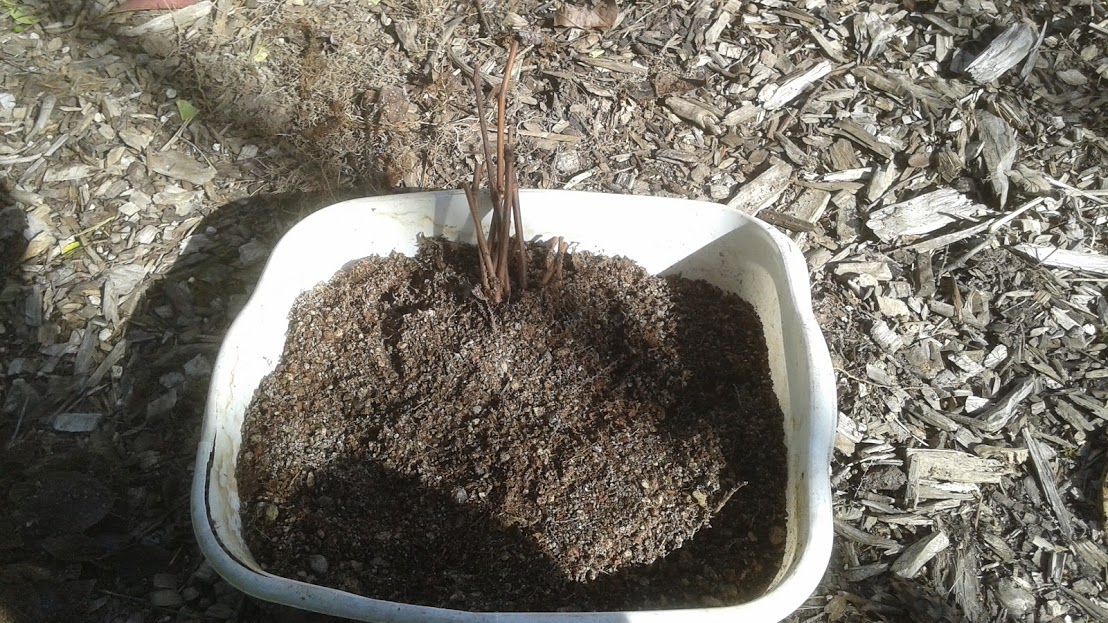
In my experience, plants that are harder to root, they will grow best in a mixture of #sand, #gravel, and porous rocks like #pumice and lava rock. Very small particles is good.
Inorganic material is perfect because it will not soak up water. Instead it will retain a lot of oxygen, and allow water to drain freely. The surface area of the sand will also allow the water tension to do some interesting stuff. Every morning water will glue itself to cold, dry rock surfaces, and trickle down to the bottom. In the daytime it will evaporate, create humidity, and begin to dry. This is the perfect environment to tease the cuttings into rooting.
Bury the cuttings in the gravel mixture. Experiment with different arrangements. Usually people like to poke them straight up and down, with space between each, to force roots to grow directly underneath for a strong upright shape. Sometimes a cutting will root better if buried in a slanted angle, as that provides more surface area available for roots to form. Make sure at least one or two nodes, leaves, or buds remain above the surface, to get the benefit of sunlight and fresh air. For #rhizome cuttings and root cuttings, they seem to prefer to be completely buried fully, with no parts exposed along the surface. Sometimes cuttings will be stimulated by having other cuttings nearby.
When to water
Before it gets dry. Try not to ever let it dry out completely. Use shade if you cannot keep it moistened for long periods of time.
Unless you have a drip irrigation system, capable of applying constant fresh water, then make sure there always a very shallow layer of water (between 1/8 inch and 1/4 inch) inside the base of your container.
The container should have no holes in it.
Dump out the water, and exchange it with fresh water every week or every few days. If it rains, dump out all of the water within 24 hours, so the cuttings do not drown.
Some cuttings can actually root in standing water, however bacteria in the water will rot the cuttings if it isn't dumped out and replaced with fresh water every so often.
Protect the cuttings from extreme temperatures
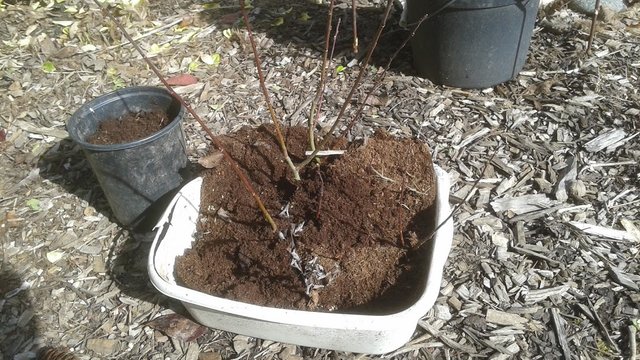
If you live in an area with frost and snow, you should take extra precautions if you have already started rooting cuttings outdoors.
Keep your cuttings protected from rainfall. I like to move my cuttings basin under the eaves of the house. You don't want any rainfall to get inside, because if it fills up and freezes, the weak cuttings probably will not survive.
Use a thick #mulch to cover the surface. The mulch will help wick up water, keep temperatures warmer, and also aid in keeping humidity around the roots. Without a mulch on top, the freezing dry winds will wither any roots that have formed. Any time the mulch looks/feels dry, apply a sprinkling of water until is it is fully moisturized.
When to transplant
You'll usually know your cuttings are ready to be transplanted, because they no longer slide out of the gravel freely. The roots are grabbing onto the rocks, and don't want to let go. That means it's ready to be transplanted.
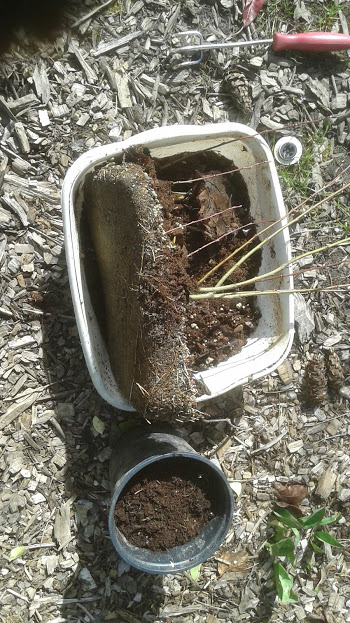
In the photo above, you'll see that my #pussywillow cuttings grew a huge root mass that clumped up together. This much roots is a good sign of health.
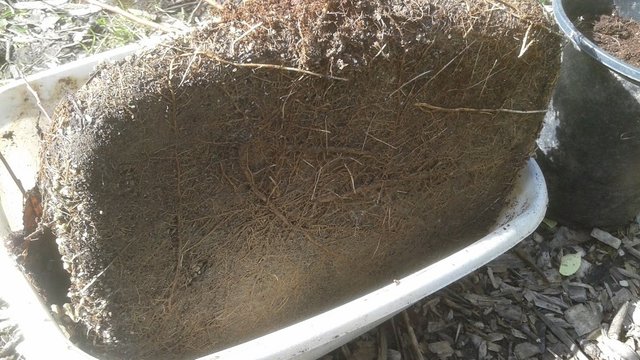
This is another advantage to having a container with no holes in it. I was able to slide out the mass of roots very easily.
This many roots is a good sign, but I will have to be careful about pulling my cuttings apart, so I do not damage too many roots.
The best way to separate the roots is to fill a basin with lots of water, and gently slosh it around until the rocks, sand, and connecting roots start to loosen up.
Another method is to use a knife to cut off excess roots. Using a saw blade, you can cut the root mass to evenly separate the roots around each cutting, until they are even shapes. I personally do not like this method, as it is difficult to know how much of the root is being removed from each of the cuttings.
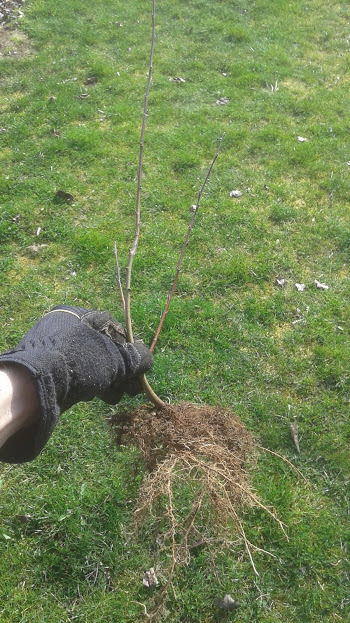
If you're like me, you just unravel the roots like a big giant knot, and shake off the rocks and sand. Make a best effort not to tear too many roots. Try not to expose the roots to direct sunlight, and keep the roots wet while doing this.
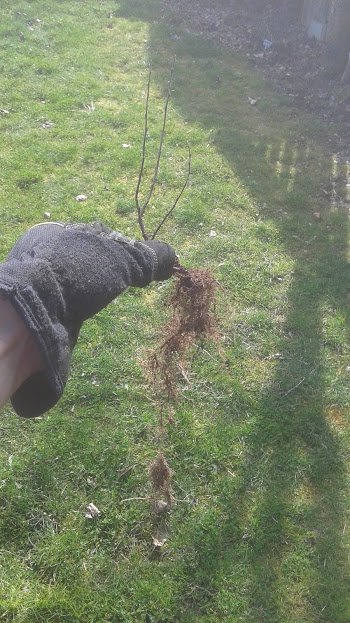
Within that mass of roots, I ended up with about seven healthy pussywillow cuttings ready to be transplanted.
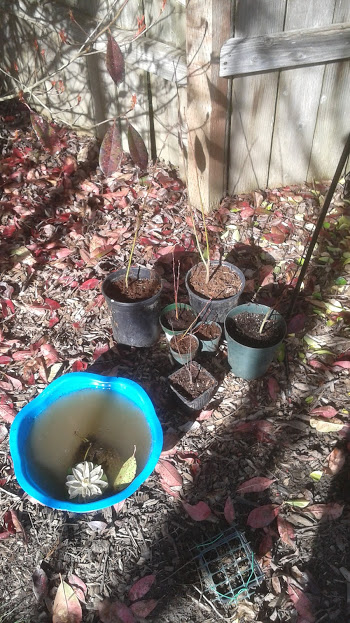
Here they are transplanted into pots. Use anything you like to use for potting soil. From now on, the roots can tolerate soil that has normal moisture retention properties. Alternatively, you can even continue to grow them in sand and rocks, but you'll have to water them more frequently if the pot has holes. Generally speaking, organic soil will retain more water, and inorganic will drain better. Sometimes a mixture of both is ideal.
Just because it has leaves, doesn't mean it is ready
Yes, especially if you just started rooting a new cutting that already has leaves on it, you might have to wait three more months before it has enough roots so it can be transplanted.
Don't go wild and start feeding it chemical #fertilizer either. The first leaves do not need fertilizer. It already has a storage of energy it is using to form healthy leaves. Wait for the temperatures to become more warm before you apply fertilizers on a regular basis. Rain has natural nutrients that will feed it what it needs. If you want to give it an early boost, it is safe to use organic fertilizers, such as worm castings, coffee grounds, compost tea, or #compost.
Check out some of the other cuttings I started rooting this past month.
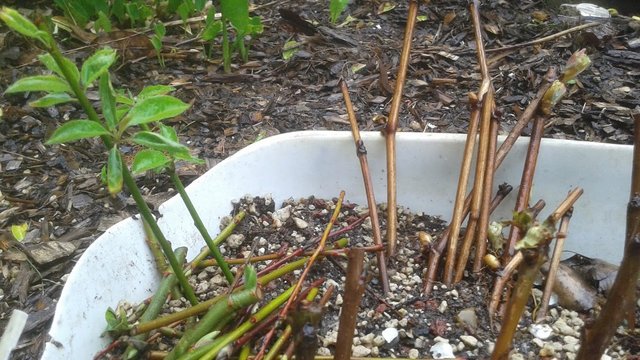
Grapevine cuttings in the back
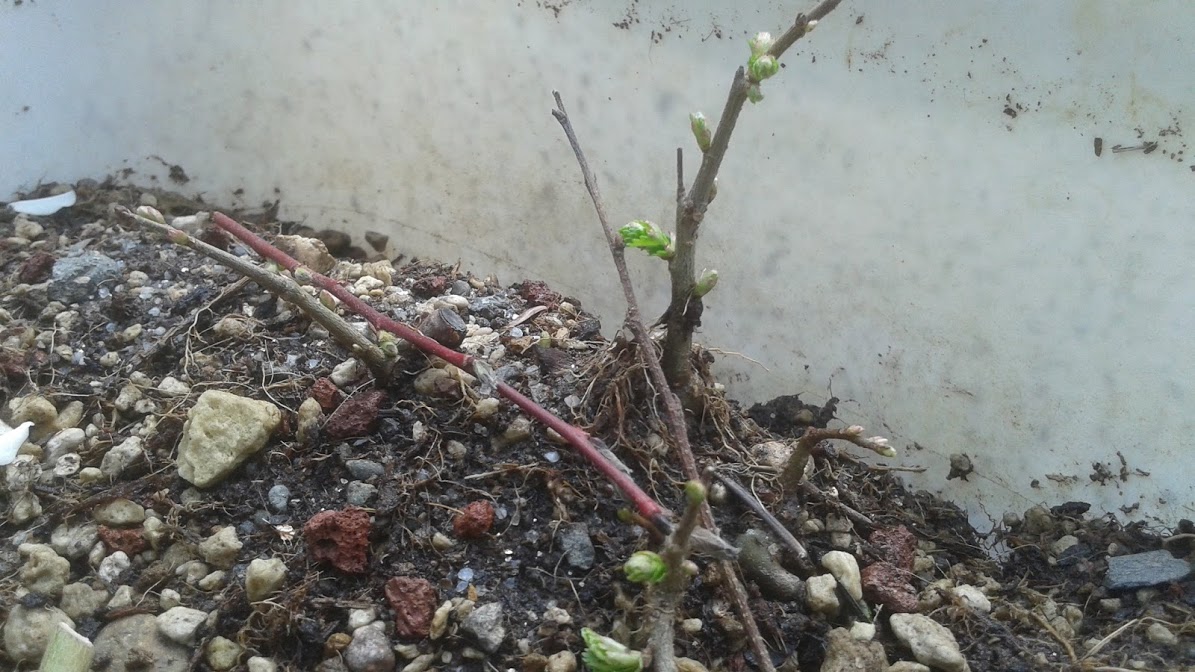
Chinese Elm. I started this cutting way back in October.
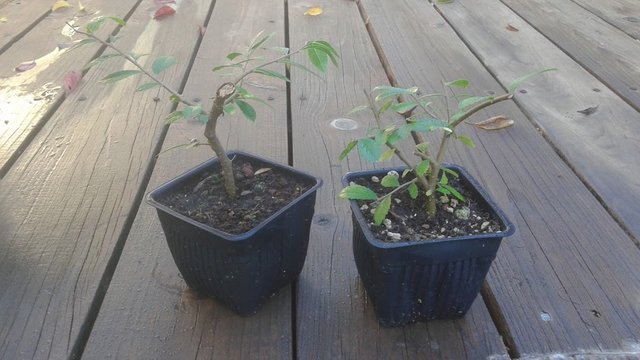
These are also Chinese Elm cuttings.
Some species, like Chinese Elm don't really need to be rooted in sand and rock. You can just stick the cut ends into potting soil, and they'll probably grow roots into it. In fact, these ones also overwintered better than the one in the sand, because the soft soil protects it better from the cold.
This past weekend, I donated one of these cuttings to a fellow #bonsai enthusiast. He was holding back tears, he was so excited to have this tree species added to his collection. Like me, he likes to do thing very inexpensively, yet he grows hundreds of bonsai trees to practice the art on. Imagine how happy he was knowing that he can clone this one tree exponentially!
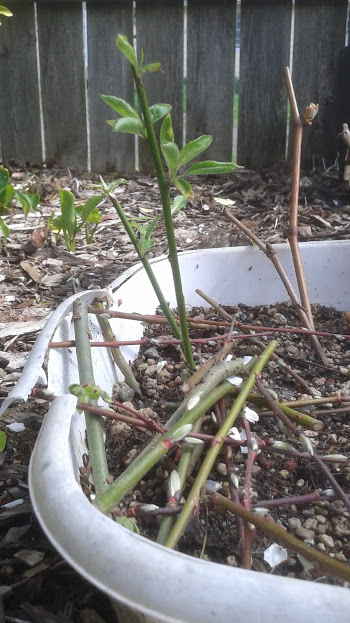
Cherry tree cuttings to the left. These were taken from a tree with white blossoms and green leaves.
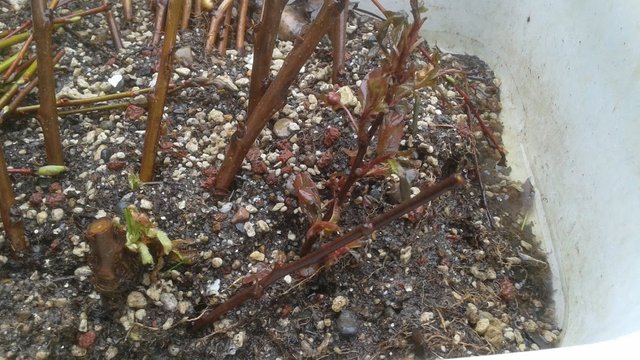
More Cherry tree cuttings. These were taken from a tree with pink blossoms and purple-red leaves.
Yes, all these Cherry tree cuttings came from the Giving Tree we recently had removed. Remember my recent post about it? (Helping Hands: Support found when I least realized I needed it most) Let's hope it continues to live on in legacy. I'll probably turn them into ornamental bonsai trees to add to my collection.
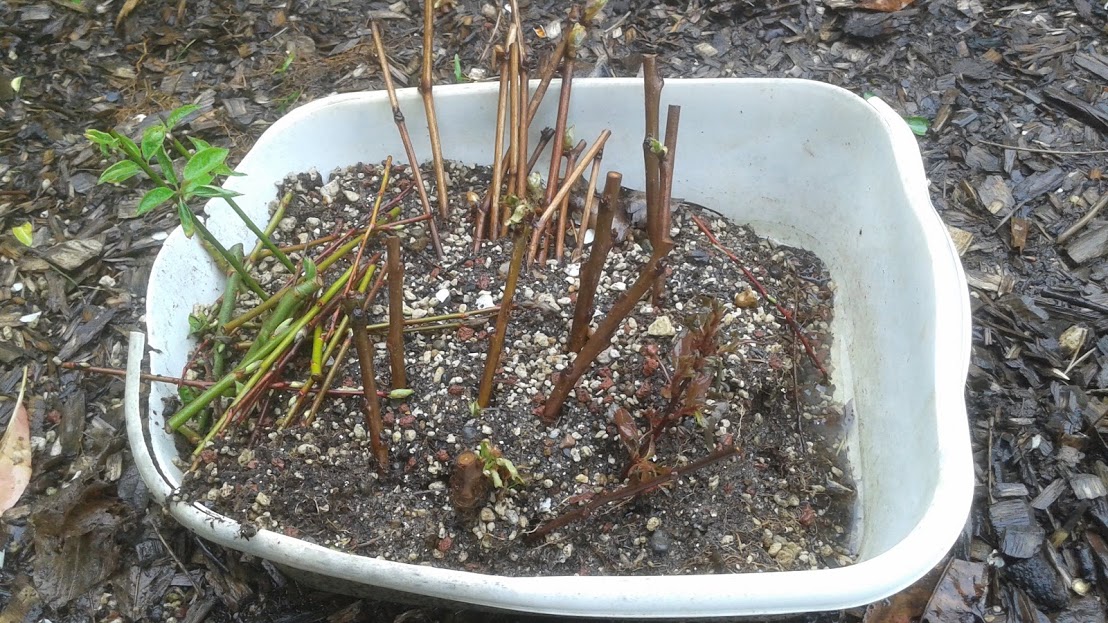
And that's all there is too it. This is the method I use for rooting all of my cuttings. I have a very high success rate with this method on tree species.
Other trees I have access to, and I may try making future cuttings from include #Azalea, #Cedar, Douglas #Fir, #Juniper, and #Maple.
Let me know if you have had similar success to mine, or if you have ever thought about trying this out. Even a vase filled with water will sometimes roots a cutting just fine. Experiment and see what works. That's part of the fun of working with nature.

Community Forums
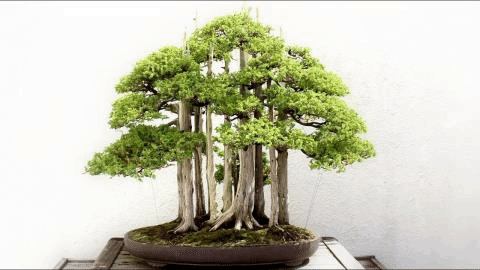
Remember your roots this week. Never forget where you came from. Be grateful for your parents and ancestors for their sacrifices, allowing you to have life.

Hi @creativetruth Hope you are fine nice to see you after a long time Hope you have good days Thanks for coming again on steemit
This time your post have a great thoughts and lesson for every one its not only for a tree its all about the forest and it also ahve a lesson that clean our environment its good thoughts that with one tree we make a forest just caring is needed for this keep it up God bless you
Never fear! I'm always snooping around looking for posts to curate and comment on. Sometimes I spend a week doing only that.
I may not have a full sized forest, but I have dozens of petite little trees now growing in pots in my backyard. It makes me happy to see them thrive from my care.
thanks my friend for learning about gardening which is very beneficial for i.anda really great in gardening and experimenting with plant.i also very happy gardening, i also never do cuttings of plants, but not succeeding. the plants that i cutted dead all.i also ever do the cuttings on Cherry plant, but fail also.i always fail in crop crops.i am very thankful for posting my friend @creativetruth who has shared information very useful for i.semogasrtelah this i will practice directly on the plant i.sekali thanks my friend for incredible information.success is always for you. from i @ pengenkaya from Indonesia
That's okay. Glad you are trying to make it work.
Thanks for sharing this photography is very nice evening post
Wow,amazing this is really natural beauty photography.This is charming photography.
Quite interesting I never thought of something like this to be in terms of cloning. Which makes me wonder how often it just happens in the wild, and if genetic diversity has ever became an issue in certain regions.
Always a great read. I can only hope if you are not running a tree nursery you are doing something you equally have passion for.
Recently I have considered maybe I should find work at a garden nursery somewhere. They would probably like having someone knowledgeable about plants and trees.
I'll never run out of hobbies I am enthralled by. My biggest problem is having enough time and resources to pursue them.
What a really great post! Lots of photos, which helps me learn better! I am resteeming for future reference.
Thank you. There's always more than one way to do something like this.
Very nice and informative.
Don't forget to upvote, reply and follow